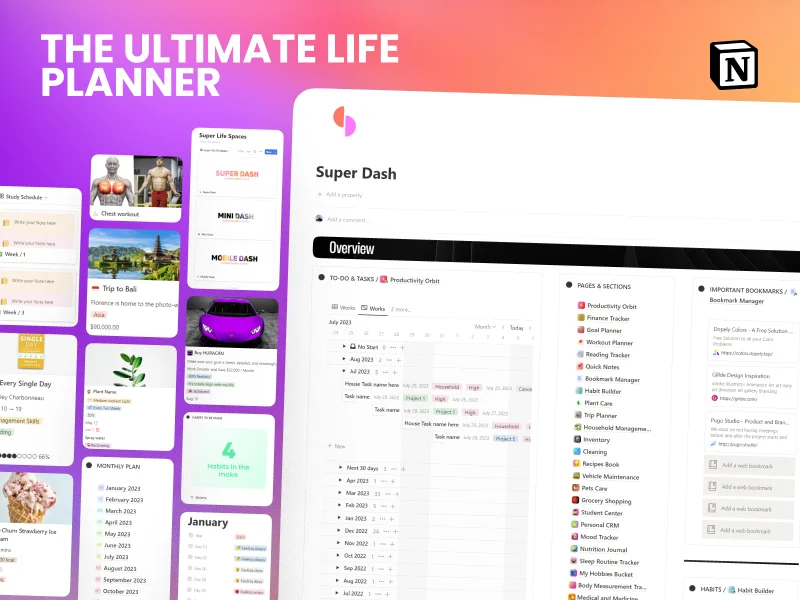Creating a successful brand strategy is crucial for any business that wants to stand out in the market. A brand strategy is not just about designing a logo or a catchy tagline. It is a comprehensive plan that outlines how your brand will communicate its values, personality, and unique selling proposition to the target audience. In this blog post, we will discuss 15 essential steps to create a successful brand strategy.
Brandora – Ultimate Brand Book Template
the game-changing brand book template that revolutionizes brand identity creation. Crafted for entrepreneurs, startups, side hustlers and brand experts, Brandora empowers you to design a captivating brand identity, even if you’re new to branding. Elevate your business with a professional brand presence that sets you apart in a competitive market.

Features and What’s Inside:
- Comprehensive Brand Book
- Visual Identity Mastery
- Messaging Precision
- Online and Offline Consistency
- Strategic Brand Matrix
- Inspiring Moodboard
Key Brand Elements: Dive deep into essential brand components:
- Brand Imageries and Illustrations
- Does and Don’ts
- Logo Safe Spaces
- Color Palettes
- Typography Guide
Practical Tools: Empower your brand-building journey with essential resources:
- Brand Matrix & Comparison
- Brand Attributes
- Brand System
Pick your niche(s)
Catering to a niche market involves offering specialized services, serving specific audiences, or limiting your focus to certain products that best serve the needs of your customers. But why is “niching down” a smart strategic move?
Here are some benefits:
- More time and energy to focus on creating the best possible products, services, and experiences for your customers.
- Reduced waste of resources, including money.
- The ability to charge a premium for your specialized expertise.
- Differentiation from competitors who appeal to different or more general audiences, perhaps with different or more general offerings also.
Rather than spreading your resources thin by trying to be all things to everyone, you can allocate them where they will be most effective.
However, this does not mean that you have to focus solely on one narrow audience, service, or product. Businesses can successfully cater to several different niches.
To lay the foundation for your brand strategy, determine where it would be most worthwhile for you to focus. Considering what you enjoy most and excel at will give you a good start and put you on the path to a targeted brand image that supports your marketing strategy.
Define Your Target Audience
Before you start building your brand strategy, you need to define your target audience. Who are the people you want to reach? What are their needs, preferences, and pain points? Understanding your target audience is critical because it will help you create a brand that resonates with them. Once you have identified your target audience, you can then develop a messaging strategy that speaks to their interests and values.
Conduct a Brand Audit
A brand audit is an evaluation of your brand’s current strengths, weaknesses, opportunities, and threats. It is essential to conduct a brand audit before developing a brand strategy because it will help you identify areas where you need to improve. A brand audit includes analyzing your competitors, assessing your brand’s visual identity, messaging, and tone of voice. By conducting a brand audit, you can gain a better understanding of how your brand is perceived in the market.
Develop a Brand Mission Statement
A brand mission statement is a concise statement that describes what your brand stands for and what it aims to achieve. A mission statement should be clear, concise, and memorable. It should also reflect your brand’s values and unique selling proposition. A well-crafted mission statement can serve as a roadmap for your brand strategy.
Develop a Brand Personality
A brand personality is the set of human characteristics associated with your brand. It is what makes your brand unique and memorable. Developing a brand personality involves defining your brand’s tone of voice, visual identity, and messaging style. Your brand personality should be consistent across all touchpoints, including your website, social media, and advertising.
Develop a Brand Value Proposition
A brand value proposition is a statement that explains what makes your brand unique and why customers should choose your brand over your competitors. Your value proposition should be clear, concise, and differentiated. It should also address your target audience’s needs and pain points.
Develop a Brand Messaging Strategy
A brand messaging strategy is a plan for how your brand will communicate its value proposition, personality, and unique selling proposition to the target audience. Your messaging strategy should be consistent across all touchpoints and channels. It should also be tailored to your target audience’s interests and preferences.

Develop a Brand Visual Identity
A brand’s visual identity is a crucial aspect of its overall identity. It comprises a set of unique visual elements, such as a logo, color palette, typography, and imagery. These elements work together to create a cohesive and recognizable visual representation of the brand. A visual identity is more than just a logo or a color scheme; it reflects a brand’s personality and values.
Consistency is key to maintaining a strong visual identity. It is important to ensure consistency across all touchpoints and channels, such as websites, social media, marketing materials, and product packaging. Consistency helps build brand recognition and trust with the audience.
In addition to consistency, a brand’s visual identity should be distinctive and memorable. A brand’s unique selling proposition and personality should be reflected in its visual identity, setting it apart from competitors and making a lasting impression on the audience.
Investing in a strong visual identity is investing in the long-term success of a brand. A well-crafted visual identity helps establish a strong brand presence, build brand recognition and loyalty, and ultimately drive business growth.
Develop a Brand Tone of Voice
A brand tone of voice is the way your brand communicates with its target audience. It includes the language, style, and tone used in your messaging. Your brand tone of voice should be consistent across all touchpoints and channels. It should also reflect your brand personality and unique selling proposition.
Develop a Brand Story
A brand story is a narrative that explains your brand’s history, values, and mission. A well-crafted brand story can create an emotional connection with your target audience. Your brand story should be authentic, memorable, and reflective of your brand personality and unique selling proposition.
Develop a Brand Experience
A brand experience is the sum of all interactions a customer has with your brand. It includes the customer journey, customer service, and product/service quality. A positive brand experience can create loyal customers and brand advocates. Your brand experience should be consistent across all touchpoints and channels.
Develop a Brand Guidelines Document
A brand guidelines document is a comprehensive guide that outlines how your brand should be represented visually and verbally. It includes guidelines for your visual identity, tone of voice, messaging, and brand story. A brand guidelines document can ensure consistency across all touchpoints and channels.
Develop a Brand Launch Plan
A brand launch plan is a strategy for introducing your brand to the market. It includes a timeline, budget, and tactics for launching your brand. Your brand launch plan should be tailored to your target audience and brand personality.
Monitor and Measure Your Brand Strategy
Monitoring and measuring your brand strategy is essential to ensure its success. It includes tracking your brand’s performance metrics, such as brand awareness, customer engagement, and sales. By measuring the effectiveness of your brand strategy, you can identify areas where you need to improve.
Adapt Your Brand Strategy
Adapting your brand strategy is crucial to staying relevant in a constantly evolving market. It includes revisiting your brand mission statement, value proposition, messaging, and visual identity. Adapting your brand strategy can help you stay competitive and meet the changing needs of your target audience.
In Conclusion
Creating a successful brand strategy is a complex and ongoing process. It requires a deep understanding of your target audience, brand personality, and unique selling proposition. By following the 15 steps outlined in this blog post, you can create a brand strategy that resonates with your target audience and sets your brand apart from the competition. Remember to monitor and measure your brand strategy and adapt it as needed to stay relevant and competitive.
Related post:







